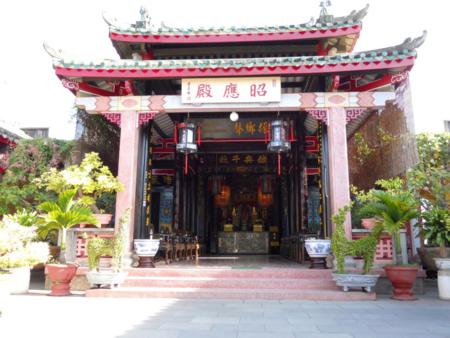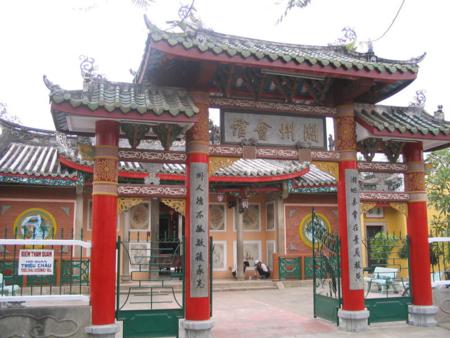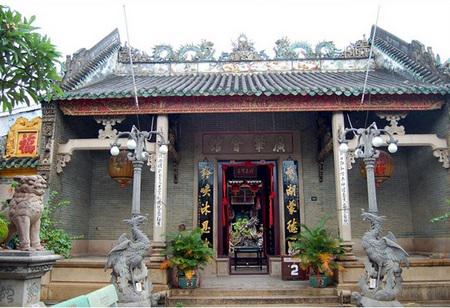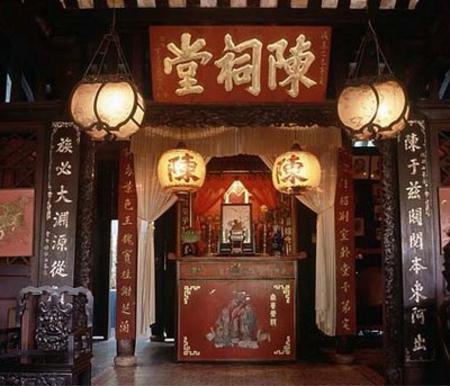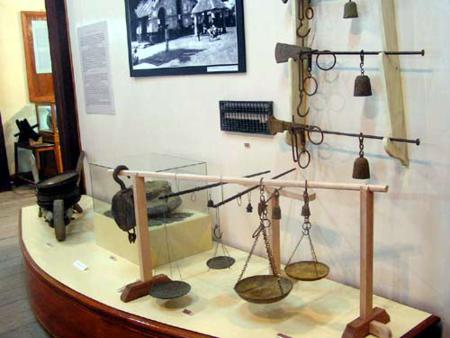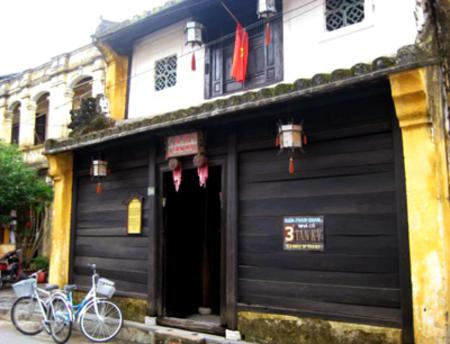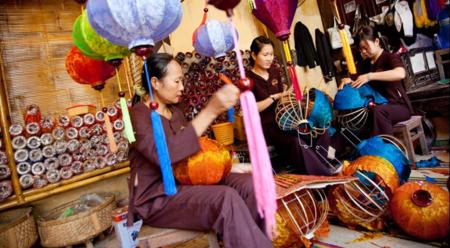Located in a small area, Hoi An enchanting travellers with many attractions, the beautiful architecture, the peaceful and gentle lives of local.
In this article I introduce you 9 attractions in Hoi An where you will not regret after visiting such as: Japan Bridge, Assembly Halls, …
# 1. The Bridge Pagoda (also called: Lai Vien Kieu and Japan Bridge)
The bridge is situated to the West of Hoi An acient street zone connecting Tran Phu road with Nguyen Thi Minh Khai street. The name “Lai Vien Kieu” has named by Lord Nguyen Phuc Chu in 1719. It was also named the Japan Bridge because it is said that the Japanese community residing in Hoi An built the bridge in the late 16th century through to the early 17th century. Thi work consists of 2 parts: the bridge and the pagoda. In reality, the pagoda is a small temple made of wood and built nearby. The bridge includes 7 sections, it is 18m long and 3m wide. The bridge floor is made of combined wood pieces with a tiled foof. One end of the bridge has 2 monkeys carrying peaches as a sumbol of good luck, another end has 2 dogs sitting and watching, the 2 couples are the male and females monkeys and dogs, they are the deities protection the land as the pair of verse lines describes: “The two heavenly deities, Heavenly dogs, protect the peace for Can land” (the two statues, the Heavenly Monkeys, hold the happiness for Khon air).
Now The Bridge Pagoda is chosen as a logo, a symbol of Hoi An ancient town.
# 2. Fujian Assembly Hall (Hoi Quan Phuc Kien)
Fujian Assembly Hall was established in 1697 by the overseas Chinese of Fujian country. Thien hau Thanh Mau (the Heavenly Mother) is worshipped at the main sanctuary of the house. The deity is believed to be an embodiment of “Quan The Am Bo Tat” (The Godness of Mercy) and help traders sail safely through hurricanes in the Oceans. Luc Tanh Vuong Gia are worshipped in the middle of the rear sanctuary, they are believed to be the six deities of Fujian who always help Fujian residents. The 12 Ba Mu (Godness who protect babies) are worshipped on the left, Tai deity (the God of Wealthy) is worshipped on the right. People come here to pray forr wealth and having children.
Address: No 46 Tran Phu street
# 3. Hai Nam Assembly Hall (Hoi Quan Hai Nam or Quynh Phu Hoi Quan)
Hai Nam Assembly Hall was built in 1875 by the overseas Chinese of Hai Nam district (Quynh Phu) who resiede in Hoi An. As many as 108 Chinese merchants were killed beacause they were mistaken for pirates. Later their honour was restored to the Royal mandarins by King Tu Duc who provided money to build the garthering house to worship them forever. It is a sacred place for the local residents and visitors praying to justify any injustice or avoid bad luck.
Address: No 10 Tran Phu street
# 4. Trieu Chau Assembly Hall (Hoi Quan Trieu Chau or Am Bon pagoda)
Trieu Chau Assembly Hall was built by overseas Chinese of Trieu Chau country in 1845 to worship the God who could suppress storms and rough seas to help them travel safely by sea. The assembly hall is well – know for its architectural struture with sophisticated carved wooden frames and wood – made altars of different decoration designs following folklore legends and beautiful ceramic reliefs.
Address: No 92 Nguyen Huy Hieu street
# 5. Cantonese Assembly Hall (Quang Dong Assembly Hall)
Quang Dong Assembly Hall was built by overeas Chinese of the Guangdong state in 1885. The rational use of wood, stone in the bearing structure, decorative details gave the imposing beauty shop, private. There is a festival in this place on “Tet Nguyen Tieu” (24 of June in lunar month) every year and attracted many participants.
Address: 176 Tran Phu street
# 6. Tran family temple
One of the most attractions in Hoi An I want to mention is Tran family temple, it was built in 1802 according to traditional feng shui principles of Chinese and Vietnamese people. Located on an area of approximately 1500m2, Tran family temple in Hoi An is an ancient cathedral style of the Vietnamese nation intact ancient architectural form.
Address: No 21 Le Loi street
# 7. Museum of History – Culture
Established in 1989, the museum keeps 212 original artifacts and valuable material of ceramic, porcelain, iron copper, paper, wood … reflects the stages of urban development – the trading port in the time of Sa Huynh culture period of Hoi An (2nd century AD) to Cham culture period (from the 2nd century to the 15th century) and the Dai Viet culture, the Dai Nam culture (from the 15th century to the 19th century).
Address: No 13 Nguyen Hue street
# 8. Tan Ky Ancient House
Tan Ky Ancient House was built nearly 200 years ago, it has unique architectural style of Hoi An with more interior space divided, each one has its own function. Front of the house is to open the shophouses, the back of the house near the river where export goods. House was built by the traditional materials and made by the local carpenter, heavy local distinctions should just take shape, small, elegant, cozy, recently shown to interact with the styles structures in the region.
Address: No 101 Nguyen Thai Hoc street
# 9. Handicraft Workshop Hoi An
Workshop brings together most of the traditional crafts of Hoi An and Quang Nam such as mat weaving, weaving, pottery, lacquer… Arriving here, visitors will witness deft hands of the artist who make up the exquisite art products and unique. Visitors can take a few steps in the manufacturing process of the job and bought a few souvenir products.
Address: No 9 Nguyen Thai Hoc street
Useful tips:
– There are 21 attractions in Hoi An traveller must buy tickets for visiting.
– Domestic customers: VND 60,000 /Ticket/3 attractions; foreign visitors: VND 120,000/Ticket/6 cultural works; free for children under 16 years old.
– Exemption policy: bonus 1 ticket for group has from 15 guests; free guider for group has from 8 guests.
– Where to buy tickets: Office of Hoi An Travel Guide. Tel: (+84) 510.3862715.



